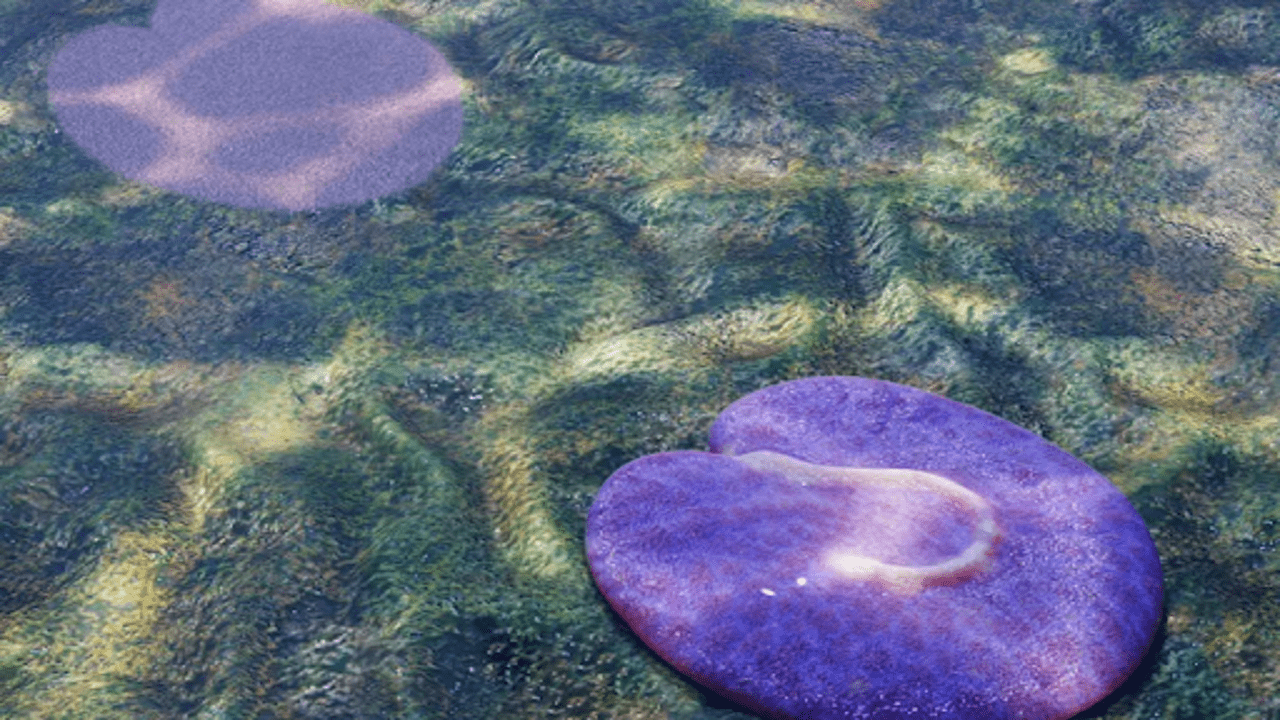
An artistic illustration shows how scientists believe Quaestio simpsonorum appeared 555 million years ago. Live Science
A remarkable discovery has emerged from the Australian outback, revealing the earliest known animal with an asymmetrical body. This creature, named Quaestio simpsonorum, roamed the ocean floor approximately 555 million years ago. It resembles a small marine vacuum, reminiscent of a "Roomba," and primarily fed on microscopic algae and bacteria.
The fossils of Quaestio were uncovered in South Australia's Nilpena Ediacara National Park, a site renowned for yielding many of the oldest complex animal fossils. Researchers have been excavating this fossil-rich area for decades, but Quaestio stands out as an unprecedented find, marking a significant milestone in our understanding of early life on Earth.
Scott Evans, a paleobiologist from Florida State University and the lead author of the study published in Evolution and Development described Quaestio as being about the size of a human palm, featuring a distinctive question-mark-shaped protrusion on its back. This asymmetrical trait distinguishes its left side from its right, a feature not seen in other fossils from that era. "There aren’t other fossils from this time that have shown this type of organization so definitively," Evans stated.
The asymmetry of Quaestio represents a crucial evolutionary step, occurring during the Ediacaran period, which spanned from 635 million to 541 million years ago. This era predates the Cambrian explosion, a time when life on Earth underwent rapid diversification. A study published in 2016 noted that organisms capable of producing consistent asymmetrical body patterns could develop more complex structures than those that are purely symmetrical. For instance, asymmetry allows for organs like the heart and liver to be positioned on different sides of the body.
Evans remarked on the significance of Quaestio's discovery, explaining that Ediacara fossils provide insights into early developmental processes. "Because animals today use the same basic genetic programming to form distinct left and right sides, we can be reasonably confident those same genes were operating to produce these features in Quaestio," he said. This connection between ancient and modern organisms enhances our understanding of how life evolved over millions of years.
Excitingly, evidence suggests that Quaestio was capable of movement. Fossilized tracks found behind one of the specimens indicate that it navigated the ocean floor, actively searching for food. "The asymmetry is especially interesting as this is also one of the first animals that was capable of moving on its own," Evans added.
Mary Droser, a paleontologist at the University of California, Riverside and the study's lead author, emphasized the significance of this discovery. "It’s incredibly insightful in terms of telling us about the unfolding of animal life on Earth," she stated. The study of Quaestio offers valuable perspectives not only on the evolution of life on our planet but also on the potential for life elsewhere in the universe. As we seek to understand the origins of life beyond Earth, examining ancient creatures like Quaestio can illuminate the pathways through which life evolved here.















